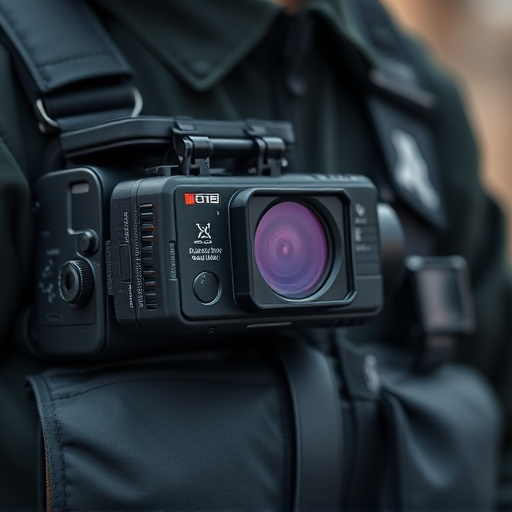Body-worn hidden cameras have revolutionized law enforcement and security operations by providing officers with a first-person perspective, capturing high-definition footage for better situational awareness and evidence. These compact devices offer real-time video capture, motion detection, and night vision, enhancing incident reporting transparency and criminal investigations. However, their introduction raises ethical concerns about individual privacy and potential misuse, requiring secure data storage to balance public safety and civil liberties in the digital surveillance age.
“Unraveling the capabilities of body-worn hidden cameras, this article offers a comprehensive insight into their role in surveillance. From enhancing public safety to aiding in criminal investigations, these discreet devices have revolutionized law enforcement strategies. We explore the various benefits and applications, examining how they facilitate evidence collection and improve community policing. Furthermore, ethical considerations and privacy concerns are delved into, weighing the advantages against potential drawbacks.”
Understanding Body-Worn Hidden Cameras: A Comprehensive Overview
Body-worn hidden cameras, also known as wearable surveillance devices, are compact and discreet cameras that individuals can wear on their bodies to capture video or still images. These innovative tools have gained significant attention in recent years, especially within law enforcement and security sectors. By incorporating a camera into an officer’s uniform, these devices offer a first-person perspective, enhancing situational awareness and providing critical evidence during operations.
The technology behind body-worn hidden cameras has advanced significantly, ensuring they are now compact, durable, and easy to operate. These cameras can record high-definition video, capture still images, and even include features like night vision and motion detection. The footage captured is typically stored locally on the device or uploaded to a central server for later review, offering organizations a comprehensive tool for monitoring and analyzing various situations.
Benefits and Applications in Surveillance
Body-worn hidden cameras have transformed surveillance practices, offering numerous benefits and expanding the capabilities of law enforcement agencies and security professionals. These compact and discrete devices allow for continuous, first-person perspective footage, enhancing situational awareness for officers in dynamic environments. With real-time video capture and evidence-grade recording, they provide an objective and unbiased view of incidents, crucial for accurate reporting and transparency.
In surveillance operations, body-worn cameras are versatile tools. They enable effective public safety management by facilitating clearer communication between officers and citizens, fostering trust, and improving community relations. Moreover, these cameras aid in criminal investigations, providing valuable evidence and enhancing the accuracy of incident reconstructions. Their portability and ease of deployment make them ideal for a wide range of applications, from traffic stops and foot patrols to high-risk operations and crowd control.
Ethical Considerations and Privacy Concerns
The introduction of body-worn hidden cameras by law enforcement agencies has sparked intense debates surrounding ethical considerations and privacy concerns. While these devices offer enhanced transparency and accountability, their constant surveillance capabilities raise critical questions about individual freedoms and civil liberties. The ethical dilemma lies in balancing public safety and officer conduct with the right to privacy, especially when camera footage can be shared widely or used as evidence in legal proceedings.
Privacy advocates argue that body-worn hidden cameras can erode trust between law enforcement and communities, particularly marginalized groups who may feel their actions are constantly under scrutiny. The potential for abuse of power exists, as officers could exploit the technology to invade personal spaces without consent. Ensuring secure data storage and access protocols is crucial to mitigate these risks. Striking a delicate balance between maintaining public safety and respecting privacy rights remains an ongoing challenge in the digital age of surveillance.
